REVIEW: A Pair of Surefire EDC Flashlights That Won’t Break the Bank
 Surefire has for decades been synonymous with high-performance flashlights, weapon lights and the like, but you would never accuse the company of building particularly affordable flashlights. They’ve never been a factor in the consumer EDC (Every Day Carry) market, just too expensive.
Surefire has for decades been synonymous with high-performance flashlights, weapon lights and the like, but you would never accuse the company of building particularly affordable flashlights. They’ve never been a factor in the consumer EDC (Every Day Carry) market, just too expensive.
SHOT Show 2015 marked something of a revolution at Surefire as it upended expectations with its new Titan and Titan Plus flashlights, both in terms of price and EDC performance. The first shocker was the price. MSRP is $59.99 for the Titan, $99.99 for the Titan Plus. Take off up to $10 from some online outlets. Not the least expensive single AAA-cell high-performance LED flashlights, but for sure the least expensive Surefire lights ever, by a big margin, and quite competitive once you factor in the features. And, like all Surefire lights, they’re still mostly made here in the USA, with Surefire noting that they are "manufactured in California, in our turning center, using U.S. sourced metals. Only the LED and some circuit board components are imported. We make our circuit boards too." But, wait, there’s more…
 The Titan high beam provides a quite adequate 125 lumens, but the Titan Plus puts out an impressive 300 lumens of what I’ll call
The Titan high beam provides a quite adequate 125 lumens, but the Titan Plus puts out an impressive 300 lumens of what I’ll call
"turbo" output (more on that later). All from that single diminutive AAA-cell. The 300-lumen output requires a nickel metal hydride (NiMH) rechargeable battery (supplied), alkaline or lithium batteries have too much internal resistance and can’t supply enough current quickly enough. You can use those alternative batteries in a pinch, but it will provide notably lower top output in the Titan Plus. The Titan will run fine on a lithium AAA-cell, and for a bit longer actually.
This fall, Surefire sent me samples. The Titan I received came with a 750 mAh NiMH Surefire branded battery made in China. The Titan Plus included a premium Panasonic Eneloop Pro 900 mAh battery made in Japan. You’ll need your own NiMH battery charger, something many buyers will already own.
Both lights offer a low mode of 15 lumens and the Plus also has an intermediate setting of 75 lumens. Twist the head switch
counterclockwise (as held) to activate and then again to set the next output level, starting at low. After about 4 seconds at the intermediate level, the Plus resets and the next twist sets it back to low. Both reset to low once turned off.
Sometimes you might prefer it just continue to high, even after some time has passed, but in actual use I didn’t find it really mattered much. A quick couple twists and I had 300 lumens when needed and didn’t accidentally get it when I didn’t. Particularly since high mode sucks the battery down quickly, the high setting should be reserved for only when needed.
I noticed one peculiarity with switching the Titan Plus from the intermediate level to high, in that it takes just a fraction of a second
longer pause between those modes than from low to intermediate. It only took a brief period of using the light to naturally accommodate that difference, but at worst you just have to give it another quick twist if it doesn’t go to high on that initial twist.
The heads have flats milled into them to provide added grip, especially important when operating one-handed. That works fine most of the time, but with wet or oily fingers, it is marginal. Some knurling or other means to provide a more secure grip would be better under such conditions.
Surefire rates the Titan Plus at 300 lumens for 45 minutes, but that is its ANSI rating, which is somewhat misleading (even if it allows
for somewhat direct comparisons between lights). In my experience, you can expect to get about 5 minutes of very high output before it dims enough to be noticeable and then another 10 minutes before it dims a bunch. Thus, my reference to this as a "turbo" mode. Useful for those instances when you need a really bright life for something quick, but you should not expect it to provide full output for an extended period. At this juncture, it’s getting just about as much light as practical from that little AAA-cell. Bear in mind, also, that the eye is somewhat insensitive as a light meter and at higher brightness it takes a significant drop in light output for us to notice it.
The Plus is rated at 75 lumens for 2 hours and it took almost the entire 2 hours for it to drop enough to be noticeable, but it then dropped way down as the regulation circuitry had sucked as much juice as it could from the battery. I found the 75 lumen output level more than adequate for almost any situation where I needed bright light for EDC use. I rarely used the 300 lumen level in normal EDC use.
 The Titan’s 125 lumen high output is rated at 1 hour and it lasted 40 minutes before dropping precipitously.
The Titan’s 125 lumen high output is rated at 1 hour and it lasted 40 minutes before dropping precipitously.
Running the lights at their 15 lumen output, the Titan is rated at 8.5 hours and the Titan Plus at 7 hours. I asked Surefire about that
seeming contradiction and they explained that the Titan Plus circuitry was optimized for the 300 lumen output and thus the 15 lumen output paid the price. They compared it to running your Ferrari around town. In any case, I got pretty close to that in my tests.
15 lumens is perfectly adequate for finding your way on a dark night and most situations requiring a light at night. For viewing
something more clearly in a room that wasn’t dark, the higher settings are better. I found myself using the low setting for 80% of my EDC use. By way of comparison, the 15 lumen output is about equal to the 2 x D-cell incandescent lights I grew up with (a long time ago, pre-Maglite) and it was far superior in usefulness with its far better beam quality.
MaxVision Lights Up the Neighborhood
 Which brings us to another feature that separates these lights from most other pocket-sized EDC flashlights, the beam itself. This innovation is courtesy of the patent pending multi-faceted reflector that creates what Surefire is calling a "MaxVision Beam." There have been a variety of attempts to create smooth and wide light (flood) from high-output LEDs, whether single focus or via a zoom mechanism, primarily using a lens and occasionally with some reflector technology. Some have been better than others, but the majority have not been particularly compact and most have been less than impressive.
Which brings us to another feature that separates these lights from most other pocket-sized EDC flashlights, the beam itself. This innovation is courtesy of the patent pending multi-faceted reflector that creates what Surefire is calling a "MaxVision Beam." There have been a variety of attempts to create smooth and wide light (flood) from high-output LEDs, whether single focus or via a zoom mechanism, primarily using a lens and occasionally with some reflector technology. Some have been better than others, but the majority have not been particularly compact and most have been less than impressive.
The MaxVision Beam is not about how far the beam can throw down-range; it’s all about providing a wide, even beam. This is especially
advantageous lighting up your entire environs out to a practical distance, a true "flood" beam. You really have to re-calibrate your expectations or you’ll miss the point.
For some time, the grail of higher powered flashlights has been "throw," how far they can light up something that’s a long ways
away. That has some advantages, particularly in some tactical situations. You increase throw by concentrating the light beam in order to send more photons further, which is great downrange, but you end up with a very narrow bean up close. Design-wise, it’s a lot simpler than creating a broad and smooth beam, particularly using an LED. These lights aren’t about throw, they are about useful light at close to moderate distances and they do an admiral job of it.
After carrying these lights for some time in regular EDC use, and comparing them with other pocket-sized lights, the functional
advantage is readily evident. With the broad and even illumination, there’s a lot less moving the beam around to light stuff up and that, as it turns out, is a really good thing for an EDC light.
Anyone who has walked down an alley or on a trail in the dark knows what it’s like to be continuously moving the light around to light
up near, far, left, right, etc. You just can’t illuminate everything you want to be able to see at the same time.
Not so with the MaxVision Beam. Surefire says it was specifically designed to light up your natural field of vision with a smooth, pretty
even beam. Find yourself in an alley and the entire alley is lit up, wall to wall, a huge advantage in situational awareness. On the trail, you’ll be able to see up ahead, both sides and that branch sticking out ready to poke your eye out. Working on something in the dark, changing a tire or fixing something under the hood, lighting a big chunk of the work area simply makes it easier to accomplish the task at hand. On low output, it illuminates a good portion of any map or chart and all of one of those old-fashion books printed on paper that some folks still read.
The difference compared to a conventional flashlight really has to be seen to be appreciated. This light isn’t about throw distance, it’s
about usable light where you need it most. Click here for a Surefire has a marketing video that does a fair job of showing the MaxVision beam.
Construction
The Titan has a Type III black anodized aluminum body, 0.58 inches in diameter and 3 inches long, weighing in at 0.9 oz. It’s a good size
and weight for a key-chain light and has an integral tailcap post and split ring.
The Titan Plus has a bushed nickel-plated brass body. It turns out that aluminum just isn’t conductive enough to accommodate the current
flow needed to push the light output to 300 lumens. It is also 0.59 inches in diameter with the length extended to 3.375 inches to accommodate the extra electronics needed to work with that high output and the removable tailcap.
 The change to brass ups the weight to 2 ounces, a very noticeable difference. While it also has an integral tailcap post, it comes with quick-detach plastic tailcap (that adds 0.1 ounces) with split ring that fits over the end so it’s relatively easy to get it on or off a keychain when you need to. A good yank or levering the cap off to the side separates the cap from the light. In my opinion, at nearly 2 ounces it’s a bit too heavy for a keychain light for most folks. So, it’s a good thing that it also comes with a removable pocket clip.
The change to brass ups the weight to 2 ounces, a very noticeable difference. While it also has an integral tailcap post, it comes with quick-detach plastic tailcap (that adds 0.1 ounces) with split ring that fits over the end so it’s relatively easy to get it on or off a keychain when you need to. A good yank or levering the cap off to the side separates the cap from the light. In my opinion, at nearly 2 ounces it’s a bit too heavy for a keychain light for most folks. So, it’s a good thing that it also comes with a removable pocket clip.
The tailcap retains the pocket clip and serves as attachment for the plastic cap, it doesn’t appear to have any other function. The tailcap
on my sample was tight enough from the factory that in order to unscrew it to remove the pocket clip I needed to use a slim screwdriver through the post hole to get enough leverage. The clip is not reversible and at 2 ounces, it’s really too heavy to use as a cap light.
The lights are rated at IPX7 for water-resistance, meaning they are good for immersion up at 1 meter for 30 minutes. I testing them for 45 minutes at 1 meter (lost track of the time) and they worked fine afterwards with no visible water intrusion.
Bottom Line
The bottom line is that I think Surefire has a potential hit with the Titan line-up. The price and features work for somebody looking for a
compact and useful EDC light that’s a step up from the run-of-the-mill 1 x AAA LED flashlights for not too much more money. Whether Surefire can successfully market to a more average consumer remains a question. Engineering innovation for a new market is one thing; marketing to an entirely new consumer is a far bigger leap.
Franken-Titan
 I really liked having the triple mode option with that really bright high beam for the occasional times it comes in handy, and the mid-range 75 lumen output for general use, but I really wanted it as a keychain light. I wondered what would happen if I fitted the Titan Plus head (and 900 mAh battery) to the Titan aluminum body? That combination weighs in at 1.3 ounces, a significant reduction in weight, relatively, putting the "Franken-Titan" back into keychain weight territory, in my opinion.
I really liked having the triple mode option with that really bright high beam for the occasional times it comes in handy, and the mid-range 75 lumen output for general use, but I really wanted it as a keychain light. I wondered what would happen if I fitted the Titan Plus head (and 900 mAh battery) to the Titan aluminum body? That combination weighs in at 1.3 ounces, a significant reduction in weight, relatively, putting the "Franken-Titan" back into keychain weight territory, in my opinion.
I asked Surefire about this and they said it wouldn’t damage the electronics, but noted that the threads were slightly different. It seems
to screw on and off just fine for me, so apparently not different enough to matter.
Surefire said they didn’t have any runtimes or output ratings for this configuration. In terms of light output, it seemed to me to be
visually indistinguishable at 15 and 75 lumens. Without an integrating sphere I couldn’t measure the brightness, but if I had to guess, I’d say it was close to the same on the high setting as with the brass body. It lasted at or near the initial brightness for essentially the same amount of time at all levels. Clearly it wouldn’t work to produce the same ASTM rating at full 300 lumens, or they would have stuck with aluminum, but that is of little concern to me. It works just fine from my practical use perspective. It’s now in my pocket on my keychain.
Perhaps it’s something for Surefire to consider as buying two lights to get one doesn’t exactly provide the same level of value. Also, the quick-detach option with that tailcap would still be nice to have with a lighter-weight EDC light.
And, as long as we’re wishing, an affordable Surefire 1xAAA headlamp with the MaxVision beam would be a great addition to this consumer EDC line-up.


 The somewhat intricate links are precision manufactured using a Metal Injection Molding (MIM) process. Compared to the typical 300-series stainless typically used in jewelry, watch bands and the like, the 17-4 stainless steel can be heat treated to harden the steel so it will hold up to the rigors and abuse the tools will see. The bracelet is available in either natural stainless steel or with a DLC (Diamond-Like Coating) black finish.
The somewhat intricate links are precision manufactured using a Metal Injection Molding (MIM) process. Compared to the typical 300-series stainless typically used in jewelry, watch bands and the like, the 17-4 stainless steel can be heat treated to harden the steel so it will hold up to the rigors and abuse the tools will see. The bracelet is available in either natural stainless steel or with a DLC (Diamond-Like Coating) black finish. Final judgment is in on ACR’s lawsuit against DME and its design consultants alleging that they misappropriated ACR trade secrets and documents and incorporated them into DME’s SATRO PLB. In a Stipulated Judgment and Permanent Injunction issued on January 15, 2013, DME lost big time.
Final judgment is in on ACR’s lawsuit against DME and its design consultants alleging that they misappropriated ACR trade secrets and documents and incorporated them into DME’s SATRO PLB. In a Stipulated Judgment and Permanent Injunction issued on January 15, 2013, DME lost big time.
 Turns out that just days before I published my initial report on the SATRO,
Turns out that just days before I published my initial report on the SATRO, 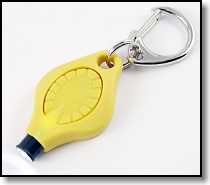 There’s no excuse not to always have a flashlight with you with the proliferation of compact LED flashlights.
There’s no excuse not to always have a flashlight with you with the proliferation of compact LED flashlights. 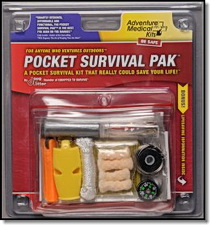 For a compact survival headlamp, having a switch that cannot readily be inadvertently switched on in storage, the
For a compact survival headlamp, having a switch that cannot readily be inadvertently switched on in storage, the 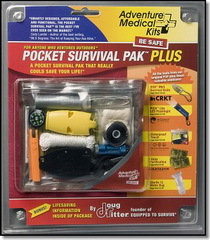 I always carry at least two, and usually three, means to start a fire. It is really that important. Besides a compact lighter, reliable matches are a good choice. For many years I have recommended
I always carry at least two, and usually three, means to start a fire. It is really that important. Besides a compact lighter, reliable matches are a good choice. For many years I have recommended 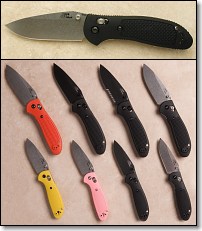 My
My 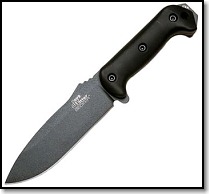 The second run of my
The second run of my 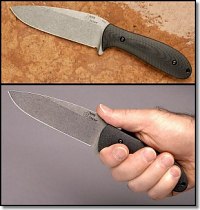 My
My 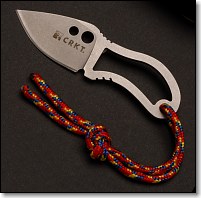 If a very compact knife to fit in a survival kit is what you are looking for, I suggest you consider my
If a very compact knife to fit in a survival kit is what you are looking for, I suggest you consider my  For well under $300 you can get a 406 MHz Personal locator Beacon (PLB) with integral GPS that is about the size of many cell phones, weighs less than 5 ounces and easily fits in your pocket. With a simple press of a button your distress alert is sent out through the international COSPAS-SARSAT distress satellites and help will be quickly on its way. There is no recurring charge or subscription and the battery has a replacement interval of 6 years (by which time it will be smaller and cheaper, so you won’t replace the battery anyway).
For well under $300 you can get a 406 MHz Personal locator Beacon (PLB) with integral GPS that is about the size of many cell phones, weighs less than 5 ounces and easily fits in your pocket. With a simple press of a button your distress alert is sent out through the international COSPAS-SARSAT distress satellites and help will be quickly on its way. There is no recurring charge or subscription and the battery has a replacement interval of 6 years (by which time it will be smaller and cheaper, so you won’t replace the battery anyway). 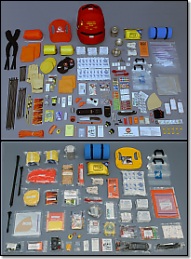 Saving the best for last, I offer up the
Saving the best for last, I offer up the 





 Dedicated GPS Tracking button – Again, this should help make it less confusing and easier to use the tracking function. This is actually pretty important because the tracking function can provide a degree of back-up in case the device does not transmit a GPS location in a distress alert. SPOT 2 will transmit a distress alert, even without a GPS location. If you have tracking engaged and you have an emergency, but the distress alert does not include a GPS location, then Search and Rescue might have the digital bread crumb trail to provide a starting point for a search. The key here is that you have to manually engage the tracking feature and you have to do that on a daily basis.
Dedicated GPS Tracking button – Again, this should help make it less confusing and easier to use the tracking function. This is actually pretty important because the tracking function can provide a degree of back-up in case the device does not transmit a GPS location in a distress alert. SPOT 2 will transmit a distress alert, even without a GPS location. If you have tracking engaged and you have an emergency, but the distress alert does not include a GPS location, then Search and Rescue might have the digital bread crumb trail to provide a starting point for a search. The key here is that you have to manually engage the tracking feature and you have to do that on a daily basis. 

 SPOT 2 reportedly meets or exceeds the same environmental and abuse resistance standards as the current PLB standard requires. It is claimed to be significantly more waterproof than the original SPOT. That was rated to one meter for 30 minutes, but we are aware of a number of instances where that appeared not to be the case or insufficient for use while running a river and the like, even when it wasn’t immersed that deep or that long. SPOT 2 is rated to 5 meters (16.4 feet) for 1 hour and that should be adequate for most users.
SPOT 2 reportedly meets or exceeds the same environmental and abuse resistance standards as the current PLB standard requires. It is claimed to be significantly more waterproof than the original SPOT. That was rated to one meter for 30 minutes, but we are aware of a number of instances where that appeared not to be the case or insufficient for use while running a river and the like, even when it wasn’t immersed that deep or that long. SPOT 2 is rated to 5 meters (16.4 feet) for 1 hour and that should be adequate for most users.  It’s leapfrog time in the PLB business and McMurdo revealed today at Miami International Boat Show their big leap forward, a new FAST FIND range of Personal Locator Beacons. The following information is culled from McMurdo press releases and their
It’s leapfrog time in the PLB business and McMurdo revealed today at Miami International Boat Show their big leap forward, a new FAST FIND range of Personal Locator Beacons. The following information is culled from McMurdo press releases and their  There are two models in the FAST FIND PLB range, the FAST FIND 200 and the FAST FIND 210, both to be priced at $299 or less according to the press release. This would be approximately one third to one half less than the price of competitive PLBs. The 210 model has an integral 50-channel GPS receiver. I can’t imagine why anyone would buy a PLB without GPS, but perhaps it’s all about marketing and being to quote lower prices and the like.
There are two models in the FAST FIND PLB range, the FAST FIND 200 and the FAST FIND 210, both to be priced at $299 or less according to the press release. This would be approximately one third to one half less than the price of competitive PLBs. The 210 model has an integral 50-channel GPS receiver. I can’t imagine why anyone would buy a PLB without GPS, but perhaps it’s all about marketing and being to quote lower prices and the like. Given the size, weight and price point, if there are no hidden surprises (I’m a professional cynic), this would be a game changer for PLBs. The size and price also would make it much more enticing for those considering SPOT as an alternative to a PLB.
Given the size, weight and price point, if there are no hidden surprises (I’m a professional cynic), this would be a game changer for PLBs. The size and price also would make it much more enticing for those considering SPOT as an alternative to a PLB.
 If you’ve ever had “fun” blowing up an air mattress, toy or other piece of inflatable equipment, or using a foot pump to accomplish the same, you must have wished there was an easier way. Sure, you can use an electric inflater, but that requires a source of power. You can hand the job off to a convenient kid, if there’s one available, but they have their own issues, of course. Finally, someone has the answer and it’s another one of those forehead slapping why-didn’t-I-think-of-that moments.
If you’ve ever had “fun” blowing up an air mattress, toy or other piece of inflatable equipment, or using a foot pump to accomplish the same, you must have wished there was an easier way. Sure, you can use an electric inflater, but that requires a source of power. You can hand the job off to a convenient kid, if there’s one available, but they have their own issues, of course. Finally, someone has the answer and it’s another one of those forehead slapping why-didn’t-I-think-of-that moments.